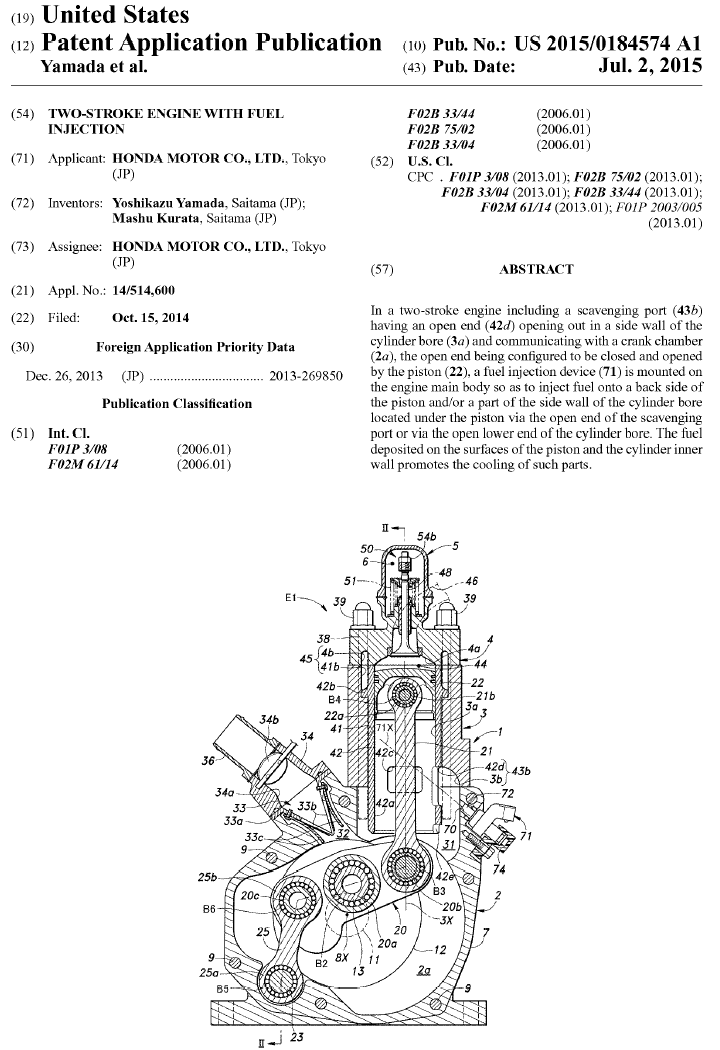No, looking from the cylinder top down at the bore, you would see regular ports.Likewise looking through the exhaust port, all will look normal. Even taking the carb off, all you will see is the 1st of what I think are actually 3 sets of reeds. Frits has been very kind and told us all way more than he should have really. Think of an upside down Dunelt piston but a bit changed of course. The picture with the superimposed piston needs a small piston diameter through the plate,maybe 30mm diameter, and like a tapered top hat above the plate. Then you just need reeds for the induction to fill the pressure chamber, and reeds to control the out flow to the ports at the right time-these will be in the spacer plate. I think it is these last reeds that are preset to x amount of pressure, that finally mix the fuel to a fog and allow HCCI to become a reality. The main reed block allows the max flow into the pre chamber area, and will I guess stop any negative pipe pressure pulses arriving at the carb, another big plus. It is very possible that a big enough negative pulse could still draw mixture fog through the entire system and into the cylinder but with no pulse back into the carb to disrupt the continual flow.
Neil






 Reply With Quote
Reply With Quote

 .
. .
.








Bookmarks